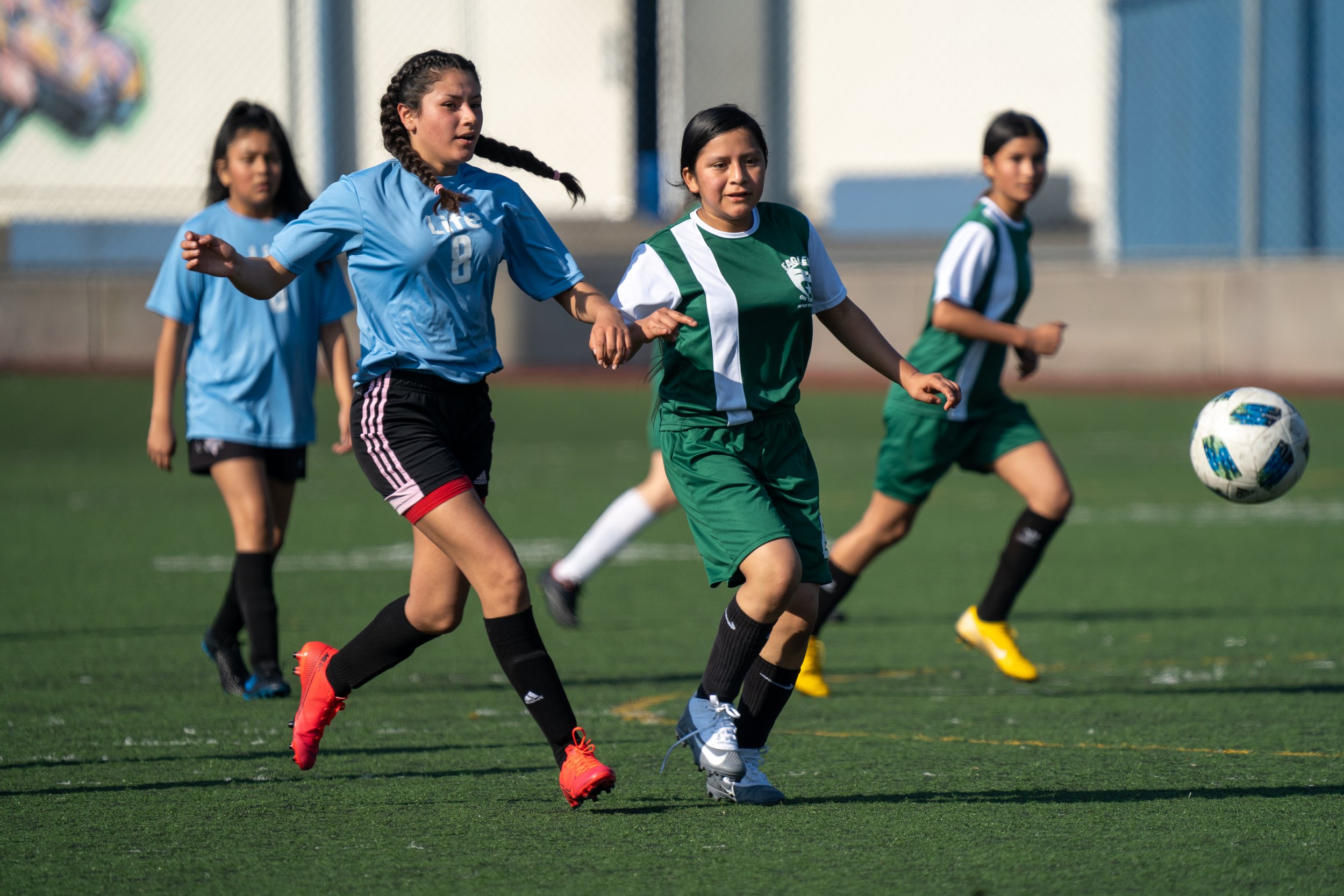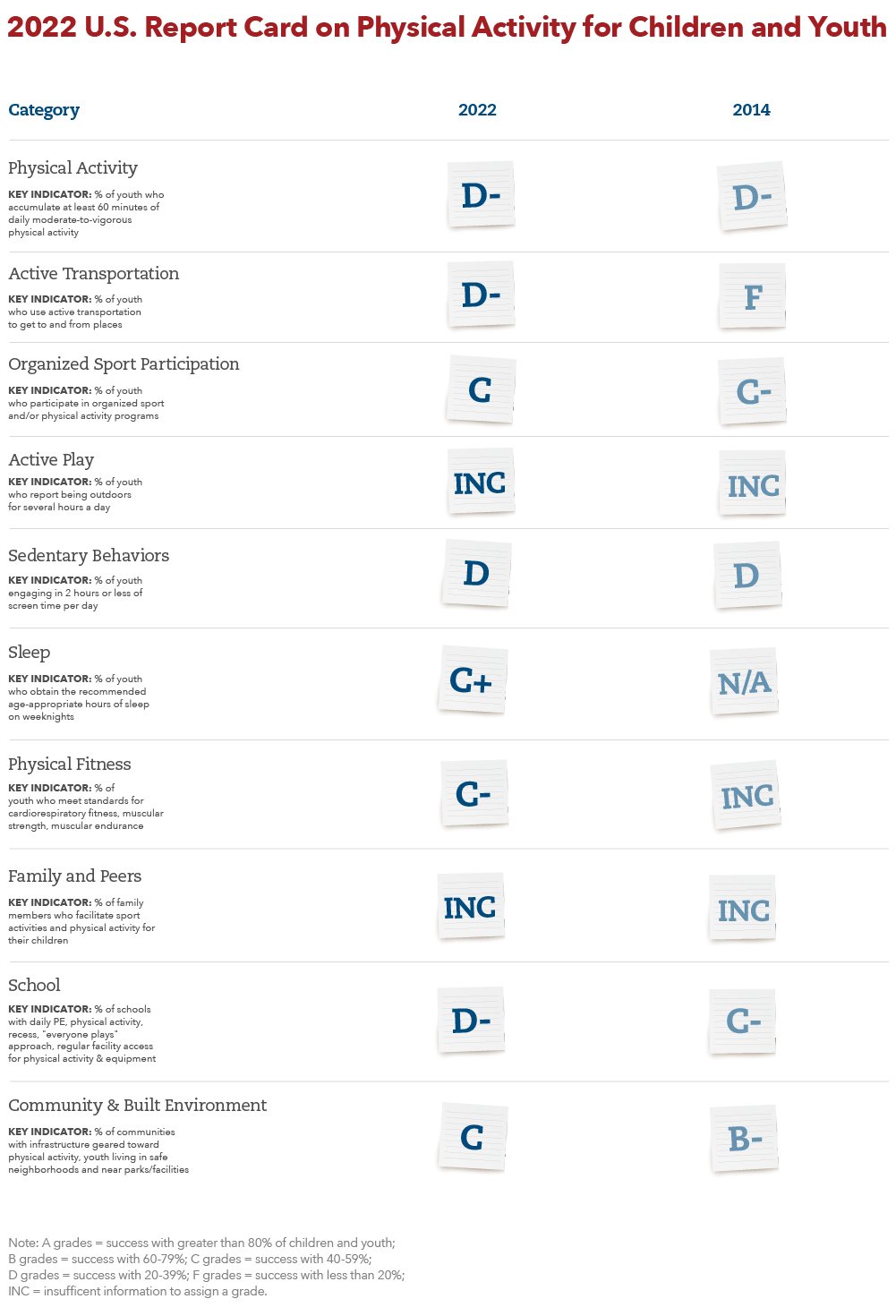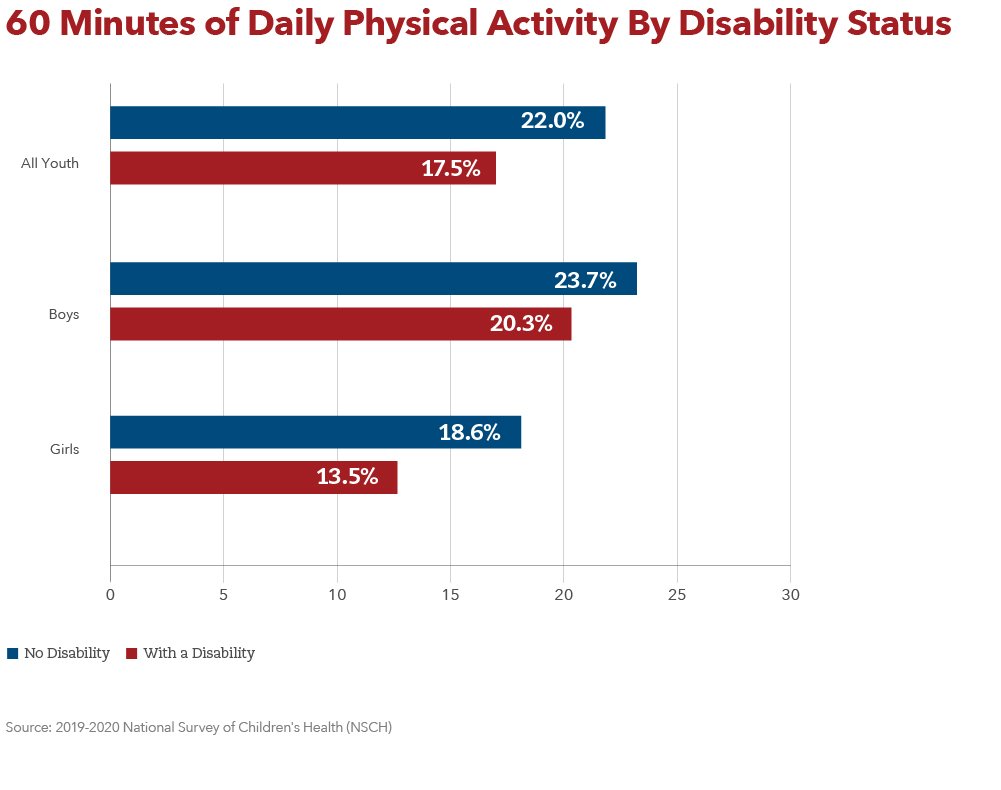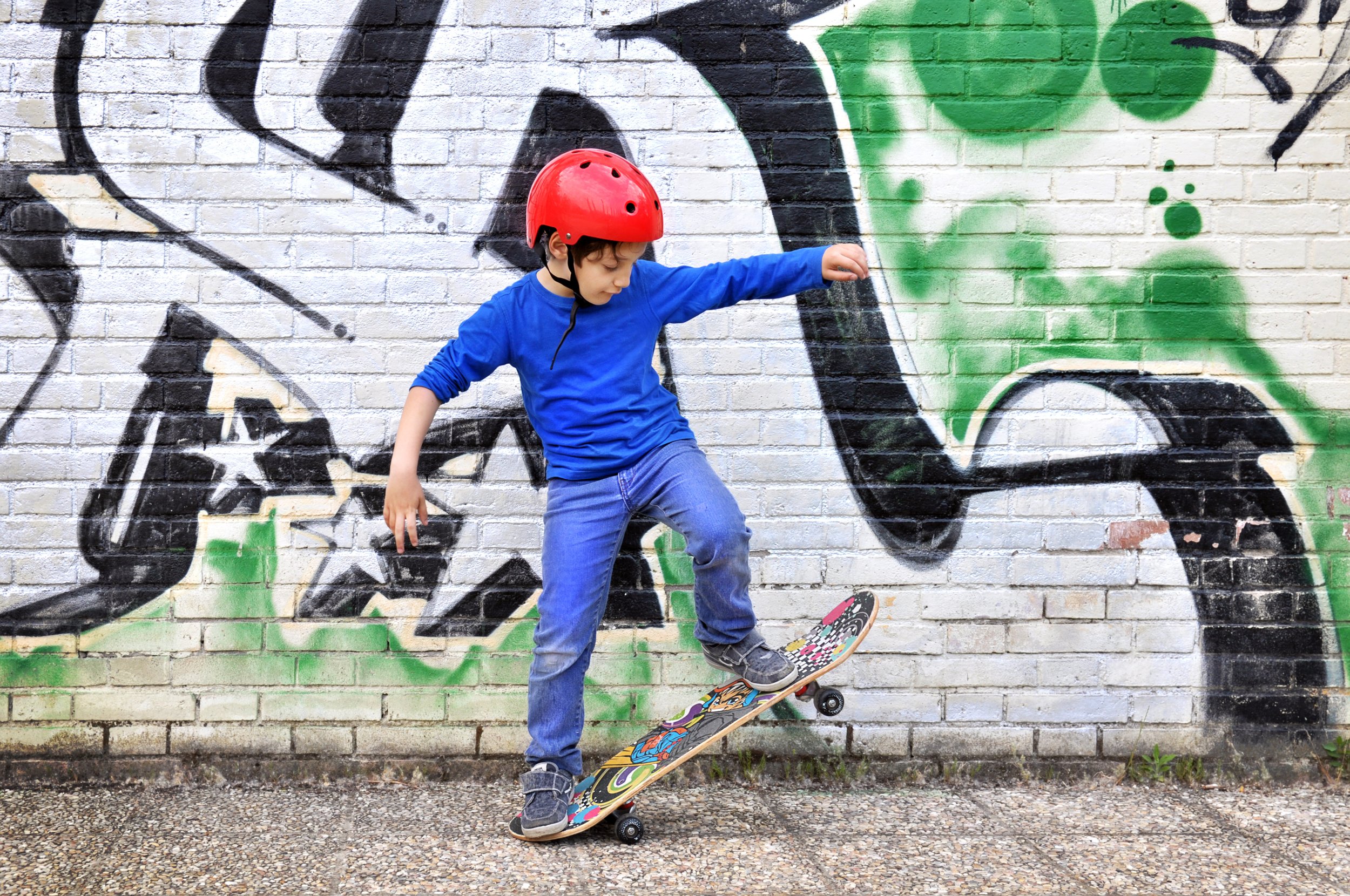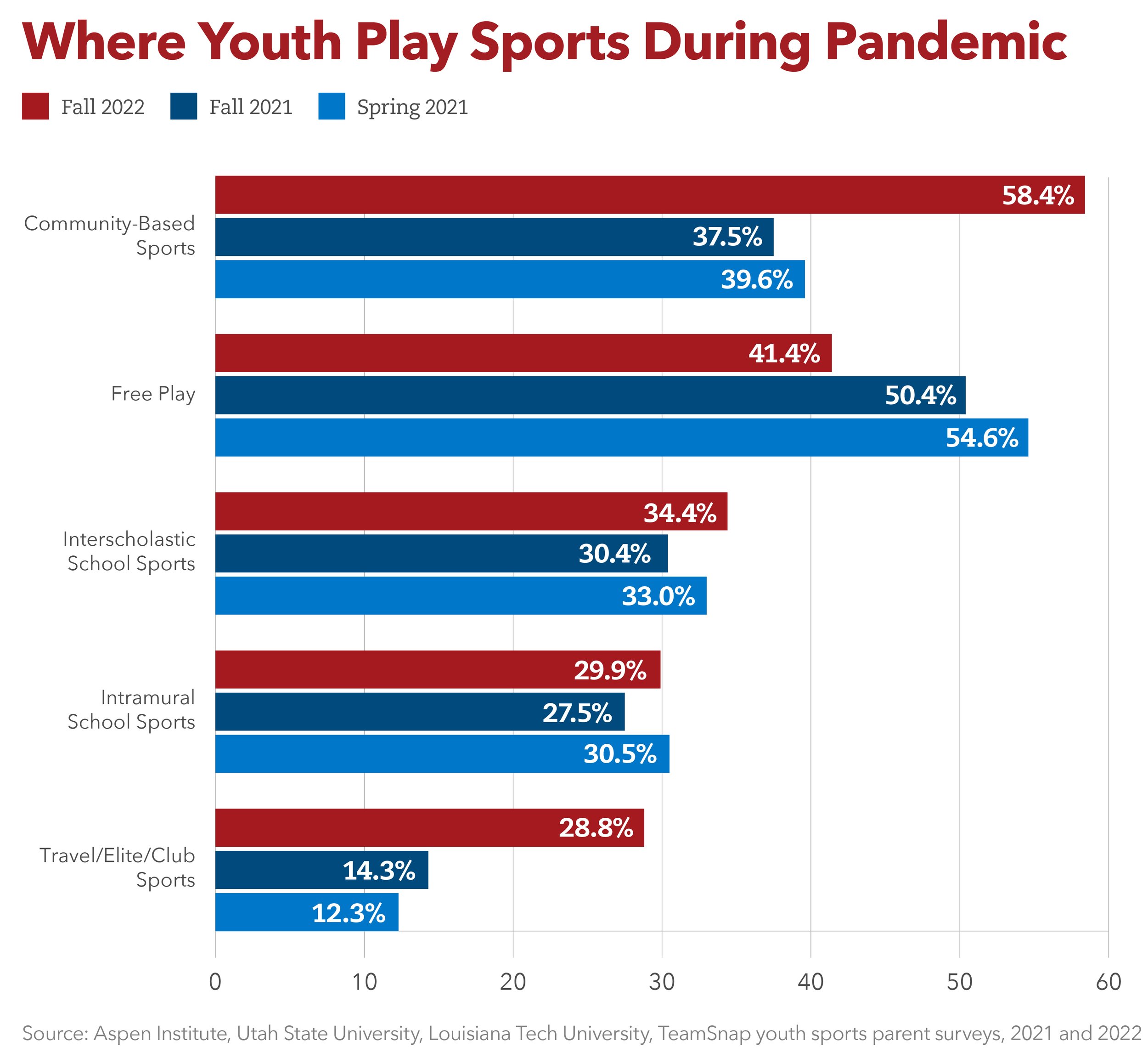Physical & Mental Health Trends
The COVID-19 pandemic exacerbated physical activity levels and mental health challenges for youth. The impact on children may continue for many years. The trends below come from the Aspen Institute’s State of Play 2022 report, courtesy of data collected or analyzed by the Project Play team or articles and research produced by other entities.
Top 5 Physical and Mental Health Trends
1
U.S. receives low grades for physical activity among youth, especially in the school setting. The Physical Activity Alliance’s latest U.S. Report Card on Physical Activity for Children and Youth showed another year of C and D grades. The body mass index for children during the first nine months of the pandemic approximately doubled compared to pre-pandemic data. There was a decrease in moderate-to-vigorous physical activity and light physical activity during the pandemic, and an increase in sedentary time compared to previous years. While dramatic changes in the physical activity landscape created the opportunity to explore other existing infrastructure for play, the report noted that results from systematic observations at community parks in a metropolitan area (Austin, Texas) revealed a 46% and 62% decrease in the number of girls and boys at parks, respectively, during 2020 compared to 2019.
The United States’ grade of a C for organized sport participation, while an improvement from past studies, was lower than 16 countries. Only Denmark measured an A. For physical activity in the school environment, the U.S. received a D- and ranked 51st out of 52 countries, despite all of the playgrounds, gyms and fields in our country.
“The low grades on the U.S. Report Card indicate that there is plenty of room for improvement when it comes to providing opportunities for children and youth to be active,” said Peter Katzmarzyk, chair of the Report Card Research Advisory Committee. “Parents should ensure that their children spend time daily in safe outdoor settings, and they should frequently spend time outdoors playing with their children.”
A new societal sector, military settings, was added to the U.S. National Physical Activity Plan in 2022 and described in the Report Card as an opportunity for physical activity promotion. Lawmakers, senior military leaders and scientists are questioning whether the U.S. can maintain an all-volunteer military as a competitive advantage due to growing rates of physical inactivity and obesity. At a 2022 Senate Armed Services Committee hearing, Lt. Gen. David Ottnigon testified that the past year has been “arguably the most challenging in recruiting history,” mainly due to candidates not meeting physical standards or having a criminal record.
13.6%
Percentage of children 6-17 who engaged in no sport activity in 2021, up from 19.8% in 2014, according to the Sports & Fitness Industry Association (SFIA).
SFIA CEO Tom Cove said the positive development is likely due to greater parent awareness that children need to do something active, plus more sport-sampling programs by national sport organizations reached a larger number of children who play at least once.
However, youth who play a healthy level of sports activities continued to decline in households making less than $25,000 a year (34.1% in 2013 to 26.6% in 2021) and between $25,000-$50,000 (38.1% in 2013 to 35.7% in 2021). Meanwhile, among families earning more than $100,000, their child’s participation increased from 43.9% to 46% in the same period.
2
Fewer youth with disabilities are physically active. Just 18% of youth with disabilities participated in 60 minutes of daily physical activity, less than the general population (22%), according to the 2019-20 National Survey of Children’s Health. Only 14% of youth with an intellectual disability, 16% with cerebral palsy and 18% on the autism spectrum met physical activity guidelines. And that was before COVID-19 created immense challenges. The Physical Activity Alliance recommended including children with disabilities in national surveillance efforts and ensure that disability is clearly and consistently defined across surveys.
The 2022 National Federation of State High School Athletic Associations (NFHS) participation survey reflects some successes and challenges for students with disabilities to participate in sports. On the one hand, Unified Sports exploded in 2021-22 with 48,000 high school participants in 15 different sports within 20 states, compared to 5,500 participants in three sports within 10 states in 2018-19. Unified Sports join people with and without intellectual disabilities on the same team. Softball, cheer, track and field, basketball, tennis and bowling were the most popular Unified Sports in 2021-22.
However, adapted sports participation declined 51% over three years, dropping to 7,700 high school students in 2021-22. Adapted sports often run parallel to other sport activities while allowing modifications necessary for people with disabilities to participate. Fourteen states had adapted sports participants, about the same as previous years. Basketball, bowling, soccer and track and field had the most adapted high school participants during 2021-22.
“Special Olympics Unified Sports in high schools has broader infrastructure and also is a hybrid community model so it was likely able to sustain itself and grow even during the pandemic,” said Power of Sport Lab director Eli Wolff, whose work focuses on the intersection of research, policy and practice to advance sport and human rights, development and social change. “Adaptive sports in high schools are an emerging area with less infrastructure, and primarily school based, so it likely faced greater challenges during the pandemic.”
18
States with laws banning transgender students from participating in sports consistent with their gender identity, according to Movement Advancement Project.
Youth sports became politicized by lawmakers in 2022 even though many state high school associations had policies for years to address transgender students. An analysis by The 74 found no basis for claims that allowing transgender students to compete would drive large numbers of cisgender girls out of sports.
3
Research links children’s mental health and individual sports. A new study published in 2022 found that youth who played only individual sports tended to face more mental health difficulties than peers who played no sports at all. The findings were based on a large database that tracked the mental health and sports participation of more than 11,000 children ages 9 to 13 from across the U.S., with all responses provided before the pandemic.
The study’s lead author, California State-Fullerton University sports psychologist Matt Hoffmann, cautioned against jumping to conclusions based on the results. He told Smithsonian Magazine that the study shows a strong correlation but that it can’t explain what caused it. Hoffmann does not recommend discouraging youth play individual sports. Rather, he encouraged parents and coaches to be aware that young athletes playing individual sports might experience added stress or anxiety and could need additional support.
The study arrived at a time when children in the U.S. continue to face a mental health crisis. A dozen states have laws allowing kids to take excused absences from school for a mental health day if they feel anxious, depressed or need a day to recharge. In the Aspen Institute’s Fall 2022 youth sports parent survey, 37% of parents said their child’s mental health had improved greatly or somewhat over the previous year compared to 11% who thought it had deteriorated.
“Boys are taught hyper masculinity and don’t express emotions. It’s been suppressed. I don’t think we’ve done an adequate job of equipping coaches to handle these conversations. There has to be a safe environment for young athletes to vocalize they’re struggling with nerves.”
— Dr. Kevin Chapman, Founder, Kentucky Center for Anxiety and Related Disorders
4
Unstructured free play declines again. Remember the first year of the pandemic? While physical activity plummeted, some kids rode bicycles again, took walks and found unique ways to play outside informally. In Spring 2021, just as the COVID-19 vaccine started to become widely available, 55% of children in sports played their primary sport through free play (in addition to other more structured settings). By Fall 2022, free play had decreased to 41%, according to new Aspen Institute youth sports parent survey results, in partnership with Utah State University, Louisiana Tech University and TeamSnap.
The number of hours U.S. children participate in free play has fluctuated wildly during the pandemic. Before COVID-19, parents reported their child spent on average 3.6 hours per week in free play; that decreased to two hours by September 2020 before rising in 2021. In Fall 2022, children spent 3.4 hours weekly on free play, down 6% from before COVID-19.
Youth ages 13-17 regularly rode their bicycles 4% less in 2021 than 2020, and kids 6-12 had a 1% decline, according to Sports & Fitness Industry Association (SFIA) data. Still, the rates remained higher than pre-pandemic.
5
U.S. children show signs of more overuse injuries than Canadian youth. The sports-related injury rates for the two countries are nearly the same (44% of American children who play sports suffered an injury in the past year vs. 41% of Canadians). But torn knee ligaments, hand/wrist fractures and leg/foot fractures were almost twice as likely in the U.S. than Canada, according to our parent survey results from Fall 2022. One likely reason: American children spend much more time playing sports, increasing the risk of overuse injuries. “Sadly, it seems like the race to the top for many families actually turns into a trip to the pediatric sport rehab clinic,” said Dr. Travis Dorsch, co-author of the study and founder of the Families in Sport Lab at Utah State University.
In the U.S., 23% of children played their primary sport in organized settings at least five days a week. Just 10% of Canadian youth did that. American parents reported higher injury rates than Canadians in every category – ankle strain/sprain, concussion, knee strain/sprain, torn knee ligament, hand/wrist fracture, leg/foot fracture, and hip/thigh/upper leg strain/sprain. A recent YouGovAmerica survey found Americans are divided on whether children’s sports activities result in unnecessary injuries (46% agree vs. 39% disagree).
Read all State of Play 2022 physical/mental health charts here.
Research Sources
2022 United States Report Card on Physical Activity for Children and Youth
National Federation of State High School Associations (NFHS) Participation Survey
National Survey of Children’s Health (NSCH)
PLOS One
National Youth Sports Parent Survey – Aspen Institute, Utah State University, Louisiana Tech University, TeamSnap
Sports & Fitness Industry Association (SFIA)
YouGovAmerica



